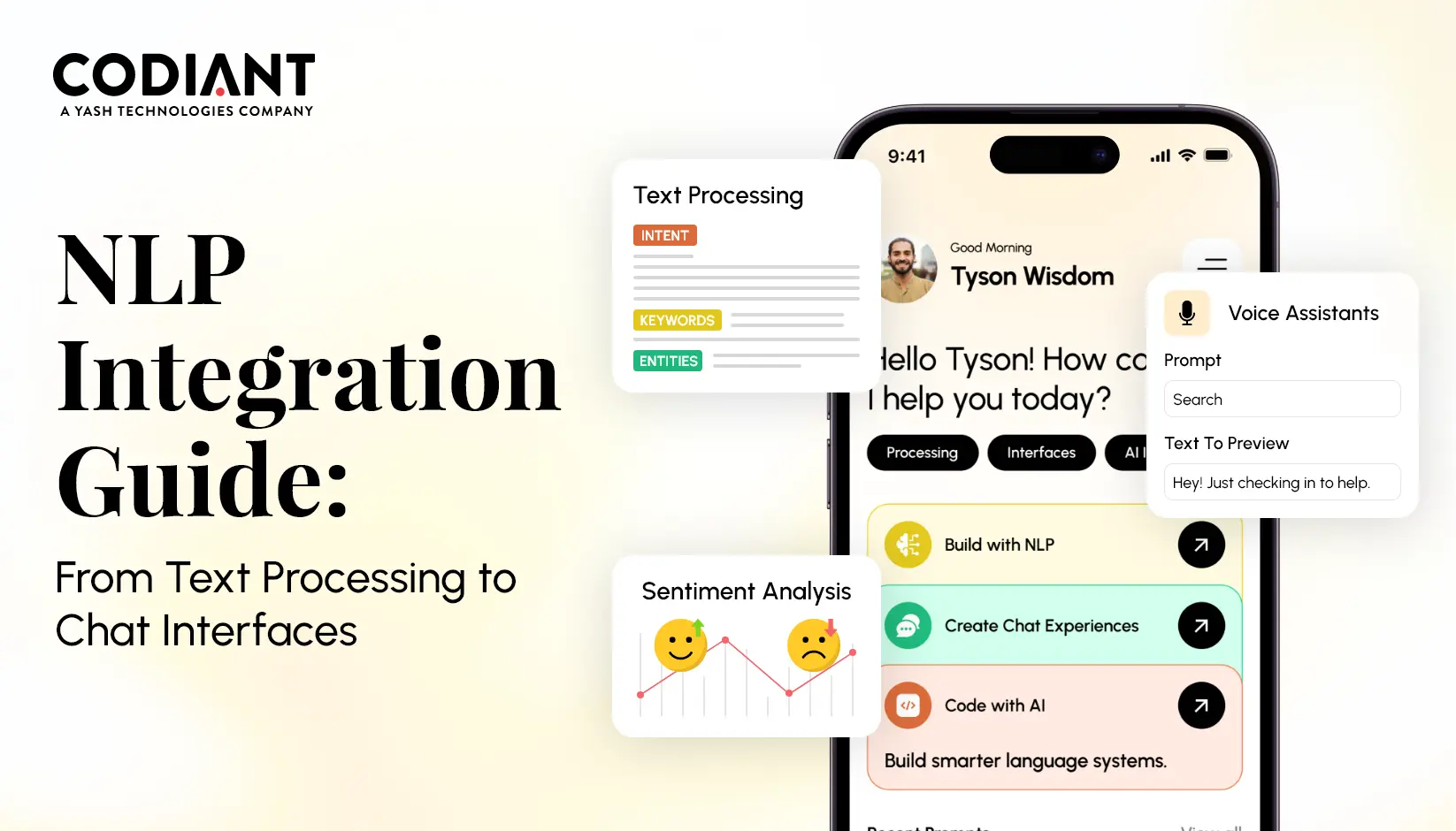How IoT Devices Are Shaping the Future of Home Automation
Table of Contents
Subscribe To Our Newsletter

Imagine a home where lights dim automatically for movies, the thermostat adjusts to your preference, and the security system alerts you to unusual activity – all effortlessly. This convenience is growing, thanks to the Internet of Things (IoT).
The Internet of Things (IoT) is a transformative technology that connects everyday devices to the Internet. This allows them to share information. IoT turns simple devices into smart ones so that they can communicate and operate without human help.
This technology boosts our comfort, energy efficiency, and security. As IoT continuously evolves, it is setting new standards too. Our homes have now become smarter and better at meeting our needs.
Did You Know?
By the end of 2024, there will be over 18 billion connected IoT devices worldwide. The number of active IoT devices is expected to double by 2030.

As we step into 2024, IoT devices are not just influencing home automation, rather they are creating it. Keep reading, in the next sections, we’ll dive deeper into this topic to learn how these IoT devices are shaping the future of home automation. Welcome to the future—it’s already here!
The Rise of IoT in Home Automation
Years ago, the idea of smart homes began with basic devices. For example, programmable thermostats that allowed you to schedule your home’s temperature, and garage door openers with which you can operate the door of the garage remotely.
The real change came with improvements in technology, like faster internet, cheaper microprocessors, and better wireless communication. These advancements allowed devices to work together, leading to the modern smart home systems we use today.
Early Examples of IoT in Home Automation
- Programmable Thermostats: Let you set the temperature based on time and when people are home.
- Garage Door Openers: Allowed you to open and close your garage remotely.
- Security Systems: Provided basic alarms and monitoring.
How IoT Works in Home Automation
IoT (Internet of Things) in home automation creates a network of interconnected devices that can communicate and interact with each other. It’s like giving your home a nervous system.
The Basic Structure
Smart home systems work with several key parts to make your home more convenient and controllable. The main parts are:
- Smart Devices: These are everyday items like lights, thermostats, locks, cameras, and appliances that connect to the internet.
- Central Hub: This device connects all the smart devices to the internet and lets them talk to each other and to your phone.
- Internet Connection: This is needed to control and monitor everything from anywhere.
- Smartphone App or Voice Assistant: This is how you control your smart devices, set schedules, and check on things in your home.
MYTH BUSTERS!
Myth: All IoT devices are vulnerable to hacking.
Fact: Not all IoT devices are equally vulnerable. Reputable brands prioritize security, offering encryption and other protections. Choosing trusted brands and keeping software updated helps minimize risks.
Myth: IoT devices will drastically increase energy bills.
Fact: IoT devices often reduce energy consumption. Smart thermostats and energy-efficient appliances optimize usage, leading to significant savings over time.
How it Works?
Smart home systems work like this: sensors in your devices collect information about things like temperature and light. This data goes to a central hub, which decides what to do based on set rules or your commands. For example, if the thermostat notices it’s too cold, it turns on the heater.

The hub then tells your devices what to do, like dimming the lights when it gets dark or unlocking the door when it detects your phone. You can also control and check everything using a smartphone app or voice commands.
Benefits of IoT in Home Automation
IoT in home automation offers numerous benefits and it has also significantly changed the way we interact with our homes. Here’s a detailed look at the benefits:

Enhanced Comfort and Convenience
- Remote Control: Control your home from anywhere using your smartphone. You can adjust lights, temperature, and lock or unlock doors from afar.
- Automation: Set up routines to automate tasks, such as turning off lights when you leave, adjusting the thermostat based on occupancy, or unlocking doors when you arrive.
- Personalized Comfort: Customize your home’s lighting, temperature, and entertainment settings to match your personal preferences.
Increased Security
- Real-time Monitoring: Watch over your home with security cameras and get alerts if anything unusual happens.
- Smart Locks: Manage who enters your home with smart locks that let you grant or deny access remotely.
- Deterrence: Use smart home devices to discourage intruders by simulating your presence, like randomly turning lights on and off.
Energy Efficiency
- Optimized Energy Use: Smart thermostats adjust the temperature based on your habits, helping to save energy.
- Smart Appliances: Control and monitor energy-efficient appliances remotely to use them more efficiently.
- Cost Savings: Reduce your energy bills by using electricity and other resources more efficiently.
Accessibility
- Voice Control: Operate your home hands-free using voice assistants, which is helpful for people with disabilities or those with busy lives.
- Remote Assistance: Help elderly or disabled family members by monitoring and controlling home systems from afar.
- Independent Living: Enable people with disabilities to live more independently with smart home technology.
Easy Home Management
- Centralized Control: Manage all your devices and systems from one app or interface.
- Smart Appliances: Monitor and control appliances to use them more efficiently and avoid problems.
- Home Maintenance: Get alerts for potential issues like water leaks or temperature changes.
Increased Property Value
- Attractive Feature: Smart homes are more appealing to buyers, boosting property value.
- Competitive Edge: Gain an advantage in the real estate market with advanced home technology.
By incorporating IoT devices into your home, you can enjoy a higher level of comfort, security, and convenience while also contributing to a more sustainable lifestyle. As technology continues to evolve, the possibilities for smart homes are endless.
Use Cases of IoT in Home Automation
Residential Applications
Reducing Heating Costs
Smart thermostats are designed to optimize heating schedules. They learn your daily routines and adjust the temperature automatically, which helps save on energy bills by preventing unnecessary heating.
Greenhouse Climate Control
IoT climate systems manage temperature and humidity in greenhouses. By adjusting these factors, they create ideal conditions for plant growth, ensuring healthier plants and better yields.
Remote Holiday House Monitoring
Smart sensors allow you to monitor your vacation home from afar. You can track environmental conditions like temperature and humidity, ensuring that your home stays in good shape even when you’re not there.
Basement Humidity Control
Humidity sensors help control moisture levels in basements. By monitoring and adjusting humidity, these sensors prevent mold and water damage, keeping your basement dry and safe.
Food Preservation in Root Cellars
Climate control systems regulate temperature and humidity in root cellars. This keeps stored food fresh for longer periods by maintaining optimal conditions.
Commercial Applications
Condominium Energy Savings
Energy management systems optimize energy use across all units in a condominium building. These systems reduce energy waste and lower overall energy costs for both residents and property managers.
Grocery Store Temperature Tracking
Refrigeration sensors are used to monitor temperatures in grocery store refrigerators. They ensure that perishable goods are stored at the right temperature, preventing spoilage and maintaining product quality.
Restaurant Temperature Sensors
In restaurants, wireless temperature sensors track the conditions of food storage areas. This real-time monitoring helps ensure that food remains safe and meets health regulations.
Healthcare Applications
Pharmaceutical Fridge Monitoring
Temperature loggers in pharmaceutical fridges provide real-time alerts if temperatures deviate from the required range. This ensures that medicines are stored correctly and remain effective.
Insulin Storage Monitoring
Medical temperature devices continuously monitor the storage conditions for insulin. Maintaining the proper temperature is crucial for ensuring that insulin remains effective and safe for use.
Current State of IoT in Home Automation
The Internet of Things (IoT) has changed how we think about home automation by making our homes “smart.” IoT devices are high-tech tools that helps to control and connect different parts of a home. Right now, smart homes use these devices, sensors, and controllers to manage and automate everything from lighting to security, making life easier and more convenient.
According to Fortune Business Insights, the smart home market, which was worth $80.21 billion in 2022, is expected to grow to $338.28 billion by 2030. This huge growth shows how popular smart home devices are becoming. More people are using smartphones and faster internet, making it easier to control smart devices. This has led to a big rise in demand for smart homes.
Popular IoT Devices in Home Automation
IoT devices have transformed the way we interact with our homes, offering convenience, comfort, and security. Here are some popular options:
Echo Dot (4th Gen)
The Echo Dot is a compact smart speaker powered by Alexa. It’s the heart of many smart homes. With voice commands, you can:
- Control lights, thermostats, and other smart devices
- Play music, audiobooks, and podcasts
- Get news, weather, and traffic updates
- Set alarms and timers
- Control compatible smart home devices
Amazon Smart Plug
This plug transforms any outlet into a smart outlet. You can control devices connected to it using the Alexa app or voice commands. Ideal for:
- Scheduling power on/off times for lamps, fans, or appliances
- Remotely controlling devices
- Monitoring power consumption
SMONET Smart Lock
A smart lock enhances home security. You can:
- Lock and unlock your door remotely using a smartphone app
- Generate temporary access codes for guests
- Receive notifications when the door is locked or unlocked
- Integrate with other smart home systems for added convenience
SmartThings
SmartThings is a smart home hub that connects and controls various IoT devices from different manufacturers. It acts as a central control point for your smart home, allowing you to:
- Create automation routines based on time, location, or device status
- Monitor and control devices remotely
- Integrate with voice assistants like Alexa and Google Assistant
Apple HomeKit
Similar to SmartThings, Apple HomeKit is a home automation framework that works with Apple devices. It offers:
- Secure communication between devices
- Easy setup and control through the Home app
- Integration with Siri for voice control
- Compatibility with a range of HomeKit-enabled accessories
Future Trends of IoT in Home Automation
Here are some of the upcoming trends in the Internet of Things (IoT) for home automation:
- Integration and Connectivity: In the future, smart homes will work better as all devices connect easily with each other. The new “Matter” standard coming in 2024 will help these devices work together more smoothly.
- Contextual Awareness: Future smart homes may have “contextual awareness”, which means that they’ll know where you are, and what you’re doing. This could lead to personalized experiences, such as an automated system notifying you that when your kids have been watching TV for too long.
- Enhanced Cybersecurity Solutions: As IoT and smart homes get more advanced, the risk of security breaches will increase. To keep homeowners safe, advanced cybersecurity solutions will be essential.
- Devices to Manage Energy Consumption: As people become more worried about climate change and want to cut down on carbon emissions, there will be a growing need for smart home gadgets that make it easier to go green.
- Healthcare Appliances for At-Home Usage: Healthcare appliances for at-home usage are another trend likely to become a “big thing” in home IoT.
- Automated Routines Using Artificial Intelligence (AI): AI can create personalized experiences by doing things like adjusting the temperature, playing music, unlocking the door, and even pouring a glass of water based on data from your morning jog.
These trends could make home automation smarter and more personalized, helping us live more sustainably and improve our health. But they also show why it’s important to protect our homes and personal data with strong security.
To Conclude
The IoT revolution is transforming modern homes, creating smarter, more connected living spaces that enhance convenience and efficiency. From automated lighting to intelligent climate control, these innovations promise a seamless home experience.
However, embracing smart technology also requires careful attention to privacy and security concerns. Homeowners must ensure that their connected devices are protected from potential vulnerabilities.
Codiant, with its expertise in home services app development, helps bridge the gap between innovation and safety, delivering solutions that are both intelligent and secure. The future of home automation will depend on the quality of IoT solutions and the reliability of the technology partners driving them. A thoughtful, responsible approach to innovation will define truly smart living.
Frequently Asked Questions
The Internet of Things (IoT) in home automation involves interconnected devices like lights, thermostats, security systems, and appliances that communicate and operate autonomously. These devices can be controlled remotely through a central hub, smartphone app, or voice assistant, improving home convenience, comfort, and security.
IoT devices optimize energy efficiency by optimizing resource use, such as electricity and heating. Smart thermostats learn daily routines, adjust temperature, and can operate during off-peak hours. Remote monitoring prevents waste, reducing energy consumption and utility bills.
Reputable brands offer security measures for IoT devices, including encryption. To protect your smart home, choose trusted brands, update software regularly, and use unique passwords. Establishing a separate network and using two-factor authentication can further enhance security and reduce hacking risks.
IoT devices enhance home security by enabling remote access control, real-time monitoring of security cameras, and the ability to simulate presence through random light turns. Smart sensors can also detect motion and glass breakage, providing additional protection.
Future IoT trends for home automation include enhanced connectivity, contextual awareness, advanced cybersecurity solutions, and energy management devices. Healthcare appliances and AI-driven automation routines are expected to become more prevalent, making smart homes more responsive to individual needs.
Featured Blogs
Read our thoughts and insights on the latest tech and business trends
Integrating NLP Into Your Existing App: From Text Analytics to Conversational Interfaces
- December 29, 2025
- Artificial Intelligence
Natural Language Processing has moved from a niche capability to an essential part of modern software, and 2025 has clearly shown its impact. Businesses are no longer rebuilding entire systems to keep up with user... Read more
How to Build an AI-Powered Queue Management System in Dubai, UAE
- December 25, 2025
- Artificial Intelligence
Dubai has been steadily moving toward faster, more efficient public and private services, and this shift has increased the need for systems that reduce waiting time and improve customer flow. With rising footfall across government... Read more
How Year-End Engagements with a Dedicated Dev Team Can Accelerate Your 2026 Roadmap at a Lower Cost
- December 18, 2025
- Staff Augmentation
In a Nutshell Year-end is the strongest window to add development capacity, clear backlogs, and prepare your 2026 roadmap without overwhelming in-house teams. Dedicated development teams accelerate delivery, reduce sprint delays, and help companies ship... Read more





